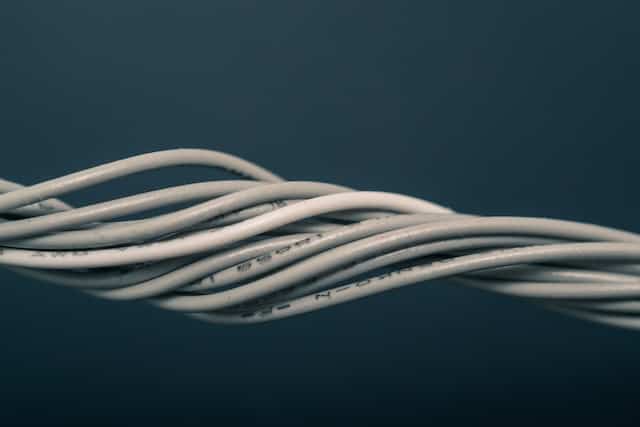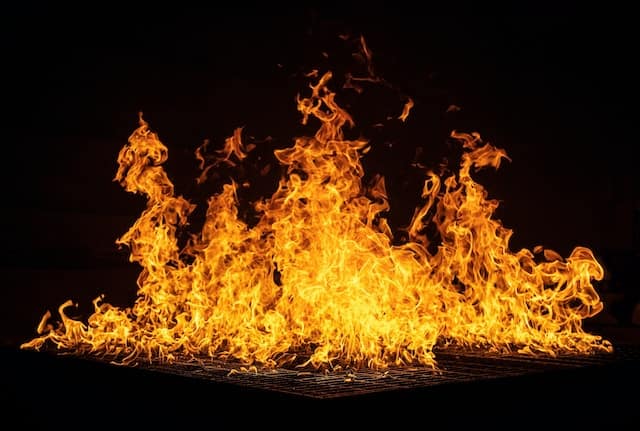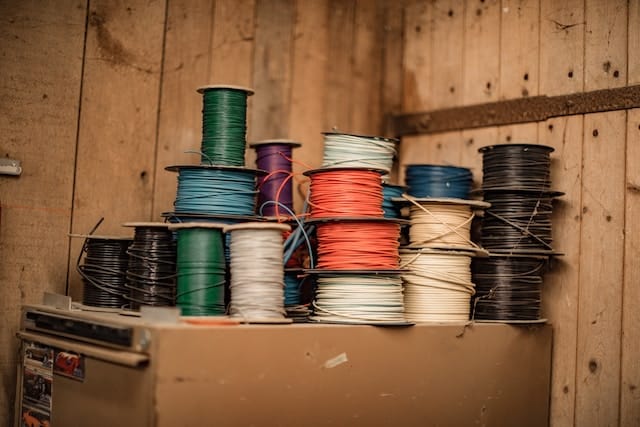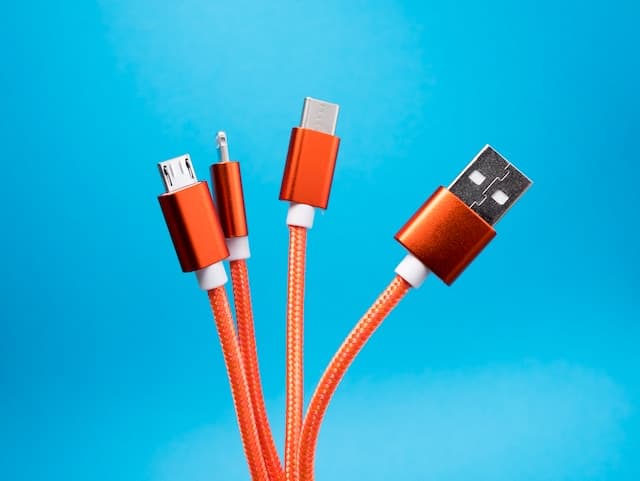Cable jackets serve as the first line of defense for cables, protecting them against physical and chemical damage. But did you know that cable jackets also play a crucial role in protecting against fire and other hazards? In fact, the National Electric Code (NEC) has created different cable jacket ratings to prevent fires and promote safety for humans and equipment.
Understanding cable jacket ratings is crucial for building safety. Communication cables face varied types of environmental stresses within different areas of a building, and using cables with lower safety standards can provoke arcs that ignite outbreaks and spread fires quickly. Additionally, certain types of cables can generate opaque smoke and toxic gases, which can impact visibility and hamper evacuation procedures. By using cables with appropriate jacket ratings, you can help ensure the safety of your building and its occupants in the event of a fire or other hazard.

Understanding Cable Jackets
Cable jackets are an important component of electrical cables, providing protection to the inner components from external hazards such as fire and other environmental factors. In this section, we will explore the role of cable jackets in protecting against fire and other hazards.
Types of Cable Jackets
There are various types of cable jackets available in the market, including plastic and rubber-based materials. The type of jacket used depends on the specific application and environment in which the cable will be used.
Function of Cable Jackets
The primary function of a cable jacket is to protect the inner components of the cable from external hazards such as fire, moisture, and chemicals. The jacket acts as a barrier between the inner components and the external environment, providing insulation and mechanical protection.
Fire Protection
Cable jackets play a crucial role in protecting against fire hazards. Fire-resistant jackets are designed to prevent the spread of fire by limiting the amount of oxygen available to the flames. Fire-resistant jackets are commonly used in applications where there is a high risk of fire, such as in industrial and commercial settings.
Other Hazards
Cable jackets also protect against other hazards, such as moisture and chemicals. Moisture-resistant jackets are designed to prevent water from penetrating the cable and damaging the inner components. Chemical-resistant jackets are designed to protect against exposure to harsh chemicals that can cause damage to the cable.
In conclusion, cable jackets are an essential component of electrical cables, providing protection against fire and other hazards. The type of jacket used depends on the specific application and environment in which the cable will be used.
Fire Resistance of Cable Jackets

When it comes to cable jackets, one of the most important features to consider is fire resistance. A cable jacket that is not fire-resistant can pose a significant risk in the event of a fire, potentially leading to further damage or injury. Here are a few things to keep in mind when it comes to fire resistance and cable jackets:
- Material Matters: The material that a cable jacket is made of can have a significant impact on its fire resistance. Some materials, like polyurethane, offer excellent flame resistance, while others may be more prone to catching fire or melting in the presence of heat.
- Testing Standards: To ensure that cable jackets meet appropriate fire resistance standards, they are often subjected to rigorous testing. Some common testing standards for cable jackets include UL 94, which measures flammability, and IEC 60332-1, which measures flame spread.
- Application Matters: The level of fire resistance required for a cable jacket will depend on the specific application. For example, a cable that is installed in a high-traffic area may require a higher level of fire resistance than a cable that is installed in a less hazardous location.
Overall, it’s important to choose a cable jacket that is appropriate for the specific application and meets appropriate fire resistance standards. By doing so, you can help ensure that your cables are protected in the event of a fire, minimizing the risk of damage or injury.
Other Hazards and Cable Jackets
When it comes to protecting cables, fire is not the only hazard that you need to consider. Here are some other hazards that cable jackets can protect against:
Chemical Exposure
Cables can be exposed to a wide range of chemicals, from cleaning products to industrial chemicals. Exposure to chemicals can damage the cable jacket, leading to cracks, swelling, and other forms of damage. This can compromise the electrical and mechanical performance of the cable, and even cause it to fail.
To protect against chemical exposure, you should choose a cable jacket material that is resistant to the specific chemicals that the cable will be exposed to. For example, polyurethane (PUR) jackets have excellent resistance to many chemicals, including oils and oxidation.
Physical Damage
Cables can also be damaged by physical forces, such as impact, abrasion, and bending. Physical damage can cause the cable jacket to crack, exposing the conductors inside.
To protect against physical damage, you should choose a cable jacket material that is resistant to the specific types of physical forces that the cable will be exposed to. For example, SOOW is a rubber service cord that is weather-resistant, making it ideal for outdoor use with RVs and marine applications.
In addition to choosing the right cable jacket material, you can also take steps to protect cables from physical damage. For example, you can use cable ties or conduit to secure cables and prevent them from being bent or twisted.
By choosing the right cable jacket material and taking steps to protect cables from physical damage, you can help ensure that your cables are protected against a wide range of hazards.
Materials Used in Cable Jackets

When it comes to cable jackets, there are several materials that are commonly used to provide protection against fire and other hazards. In this section, we will take a closer look at three of the most popular materials used in cable jackets: PVC, PE, and LSZH.
PVC
PVC (Polyvinyl Chloride) is a widely used material for cable jackets. It is known for its excellent resistance to heat, sunlight, weathering, oils, acids, and physical abrasion, making it an excellent choice for outdoor cable jackets. PVC jackets are also relatively inexpensive, making them a popular choice for many applications.
However, it is important to note that PVC is not a flame-retardant material. In fact, it can actually contribute to the spread of fire if it catches on fire. As a result, PVC jackets are not suitable for applications where flame resistance is a critical requirement.
PE
PE (Polyethylene) is another popular material for cable jackets. It is known for its excellent resistance to moisture, chemicals, UV, and ozone. PE jackets are also relatively inexpensive and can be used in a wide range of applications.
However, like PVC, PE is not a flame-retardant material and can contribute to the spread of fire if it catches on fire. As a result, PE jackets are not suitable for applications where flame resistance is a critical requirement.
LSZH
LSZH (Low Smoke Zero Halogen) is a material that is becoming increasingly popular for cable jackets. LSZH jackets are designed to emit low levels of smoke and no toxic halogens when exposed to fire. This makes them an excellent choice for applications where fire safety is a critical requirement, such as in hospitals, schools, and other public buildings.
However, it is important to note that LSZH jackets are more expensive than PVC or PE jackets. As a result, they may not be suitable for all applications.
In summary, when choosing a cable jacket material, it is important to consider the specific requirements of your application. PVC and PE jackets are suitable for many applications, but they are not suitable for applications where flame resistance is a critical requirement. LSZH jackets offer excellent fire safety properties, but they are more expensive than PVC or PE jackets.
Standards for Cable Jackets

When it comes to cable jackets, there are several standards that manufacturers must adhere to in order to ensure that their products provide adequate protection against fire and other hazards. These standards are set by various organizations and are designed to ensure that cable jackets meet certain minimum requirements for safety and performance.
IEC Standards
One of the most widely recognized standards for cable jackets is the International Electrotechnical Commission (IEC) standard. This standard provides guidelines for the design and testing of cable jackets, with a focus on ensuring that they are resistant to fire and other hazards.
Some of the key requirements of the IEC standard include:
- The cable jacket must be made of a material that is resistant to fire and other hazards.
- The jacket must be able to withstand a certain amount of mechanical stress without tearing or breaking.
- The jacket must be able to resist the effects of moisture, chemicals, and other environmental factors.
UL Standards
Another important standard for cable jackets is the Underwriters Laboratories (UL) standard. This standard is widely recognized in North America and is used to certify that cable jackets meet certain minimum requirements for safety and performance.
Some of the key requirements of the UL standard include:
- The cable jacket must be made of a material that is resistant to fire and other hazards.
- The jacket must be able to withstand a certain amount of mechanical stress without tearing or breaking.
- The jacket must be able to resist the effects of moisture, chemicals, and other environmental factors.
In addition to these requirements, the UL standard also sets specific guidelines for the testing and certification of cable jackets. This includes requirements for the testing of the jacket’s flame resistance, smoke generation, and toxicity.
Overall, both the IEC and UL standards play an important role in ensuring that cable jackets provide adequate protection against fire and other hazards. By adhering to these standards, manufacturers can help to ensure that their products are safe and reliable, and meet the needs of their customers.
Improvements and Innovations in Cable Jackets
Cable jackets have come a long way in recent years, with advancements in materials and manufacturing leading to increased protection against fire and other hazards. Here are some of the improvements and innovations in cable jackets that you should know about:
- Low Smoke Zero Halogen (LSZH) Jackets: These jackets are made from materials that emit low levels of smoke and no toxic halogen gases when exposed to fire. This makes them ideal for use in confined spaces, such as data centers, where smoke and toxic fumes can be a serious hazard.
- Flame-Retardant Jackets: Flame-retardant jackets are designed to slow down or prevent the spread of fire along the length of the cable. They are often made from materials such as PVC, which can self-extinguish when exposed to flames.
- Heat-Resistant Jackets: Heat-resistant jackets are designed to withstand high temperatures without melting or degrading. They are often made from materials such as silicone rubber, which can withstand temperatures of up to 200°C.
- Armor Jackets: Armor jackets are designed to provide added protection against physical damage, such as crushing or impact. They are often made from materials such as steel or aluminum, and can be used in harsh environments such as construction sites or oil rigs.
- UV-Resistant Jackets: UV-resistant jackets are designed to withstand exposure to sunlight without degrading or becoming brittle. They are often used in outdoor applications, such as solar panel installations.
Overall, these improvements and innovations in cable jackets have led to increased safety and reliability in a wide range of applications. When choosing a cable jacket, it is important to consider the specific hazards that it will be exposed to, as well as the environmental conditions in which it will be used.
- The Evolving Threat Securing the Final Layer: How Screen Watermarking Protects Organizations from Insider Threats Landscape in ASEAN - October 8, 2025
- The Camera Set That Makes Tracking Real: Discover What It Does and Why You Need It - October 2, 2025
- Trending Trousers: The Must-Have Styles for Women - September 26, 2025